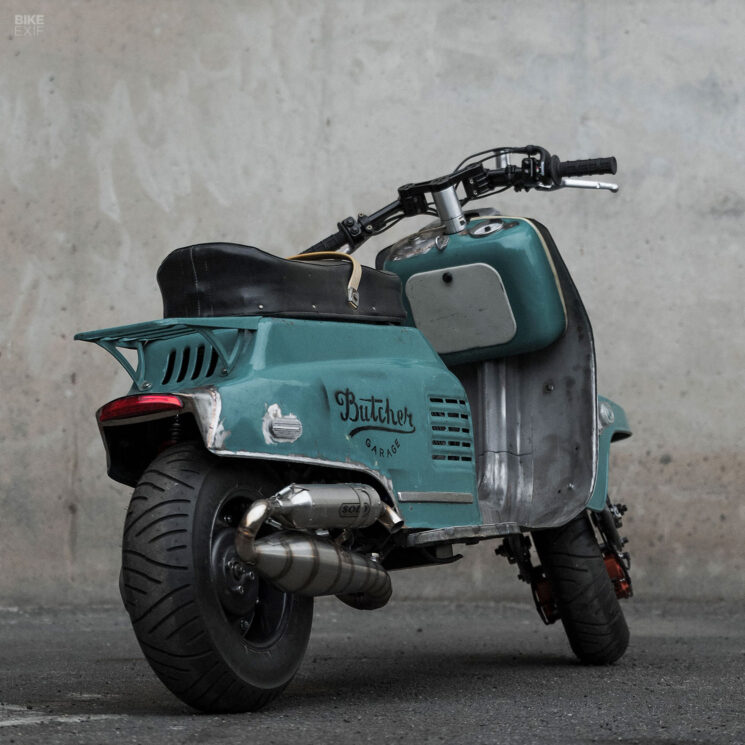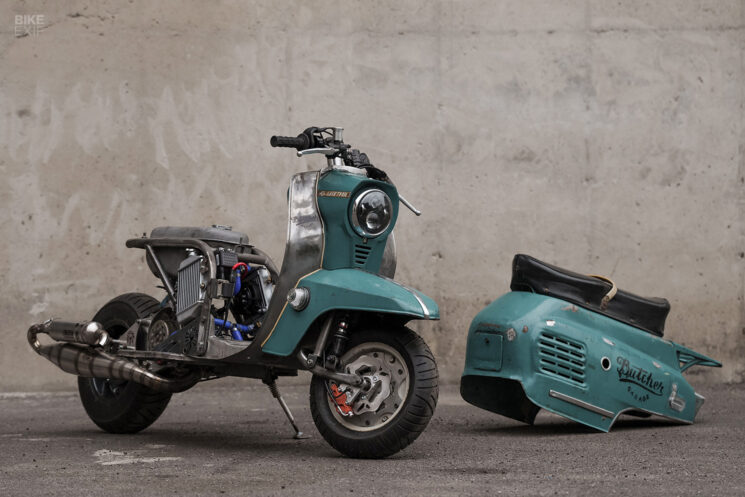
Butcher Garage is known for two things: they build wild custom scooters and they have zero regard for purists. It’s right there in their name.
“The etymology of the name of our workshop is quite simple,” explains Butcher Garage co-founder, Alex Mazan. “We love to cut the donor into pieces, for which the Vespa community dislikes us a little. They believe that everything must be kept original.”

Butcher Garage has several hard-hitting Vespa customs under its belt. But the custom scooters you’re looking at here are Vyatkas—Vespa clones that were built in Russia during the Soviet era. The unpainted one is a 1959-model Vyatka VP-150 (a copy of the Vespa 150 GS), while the blue one is a 1970s Vyatka Elektron.
These two custom scooters also mark a significant milestone for Butcher Garage, because they’re the last two builds to roll out of their Saint Petersburg workshop. Alex, his co-conspirators Arseniy Chekar and Vlad Zaki, their staff, and their families have all relocated to Belgrade, Serbia. Some of them made the trip by plane, but the rest trekked over 4,000 miles across Russia and through Georgia, Turkey, and Bulgaria to get there.
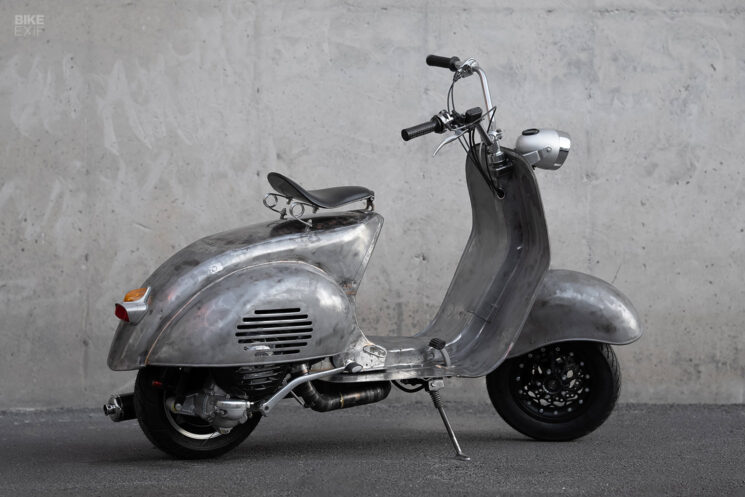
It’s fitting, then, that the Vyatka VP-150 was built for a long-time fan of Butcher Garage. And although it looks rough on the outside, it’s packed with clever mods that show the crew’s decade-plus experience in building custom scoots.
Butcher Garage started by creating a detailed digital rendering of the proposed design in SolidWorks—an approach that they’ve only started using recently. Then they got their hands dirty, transforming the humble 150 with an assortment of custom parts and scalped Vespa bits.
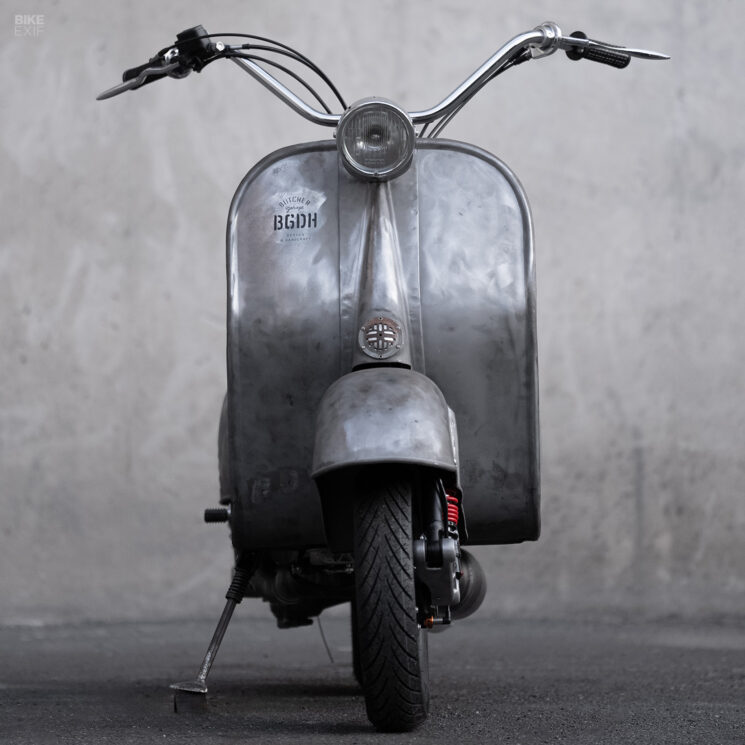
The first step was to integrate the steering tube from a Vespa PX into the Vyatka’s steel front fairing. Next, the guys modified the forks from a modern Vespa LX150 by shortening the lowers and stretching the uppers, before adapting them to the older scoot. Fully adjustable Bitubo shocks prop up both ends, supplied by the German scooter parts specialists SIP Scootershop.
Like the Vespa that it’s based on, the Vyatka VP-150 has removable wheel wells and a small access hatch below the front of the seat for servicing. But Butcher Garage had something else in mind.
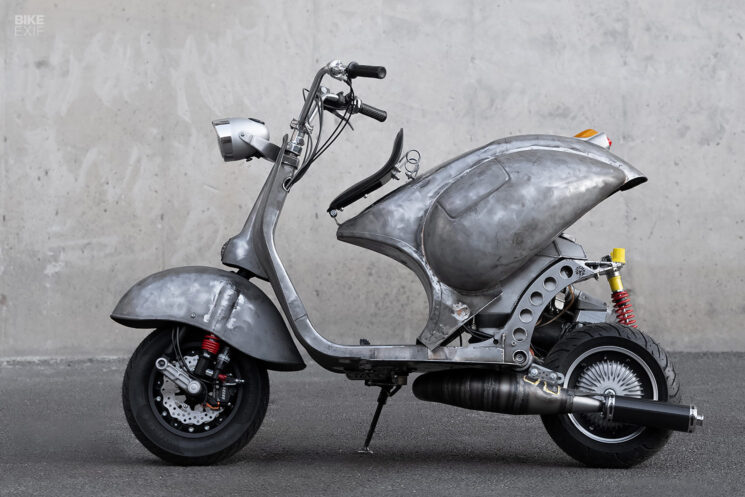
They hacked the entire rear section of the body off, before welding the wheel wells and service hatch directly to the main piece and filling in the gap left by the original seat pan. The whole thing was then re-mounted on a hinge, turning it into one giant cover for the motor. It’s accessed via the main ignition key and lifts on a hydraulic strut.
Lurking beneath the cover is a boxy stainless steel subframe, welded directly to the scooter’s main body. Mounted to that is a new 12-liter [3.2-gallon] fuel tank, also fabricated from stainless steel.
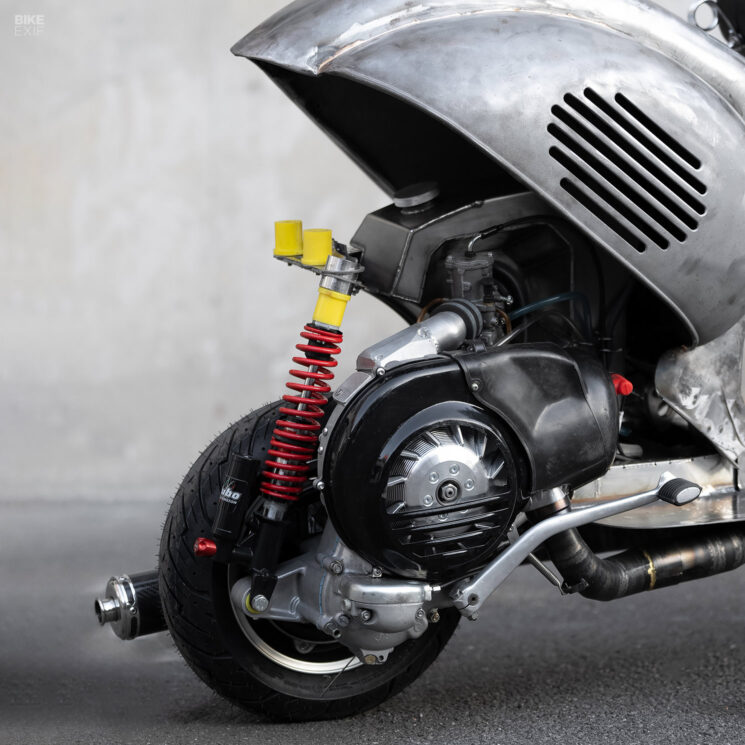
The tail also houses the engine from a Vespa Cosa 200, bumped up to 244 cc with a Quattrini aluminum cylinder kit. A Mikuni TMX38 carb and an MRP intake manifold feed the monstrous scooter motor fuel and air. The clutch, crankshaft, ignition, and exhaust are all from SIP’s extensive catalog, as are the polyurethane silent blocks that the engine and shocks are mounted on.
The front wheel uses a Polini hub, linked to a two-piece Pinasco tubeless rim via a milled wheel center from PLC Corse. A Voca brake caliper on an AF Parts caliper mount grips a floating Polini disc. The rear wheel uses the Vespa Cosa’s hydraulic drum brake, upgraded with a kit from Crimaz.

This build was inspired by one of Butcher Garage’s early breakout custom Vespas, so they used the same style of handlebars and sprung solo saddle. But where the Vespa carried its headlight on its front fender, this Vyatka’s light sits in a more traditional spot, with a tiny speedo from SIP sunk into the top of it.
And if you’re wondering if the lack of paint is an aesthetic choice, it’s not. The client requested it that way and plans to paint it only once he’s run it in. “For the first time, our fans can see our projects in their bare form and get a good look at all the details without putty, paint, or varnish, and without embellishment,” says Alex.
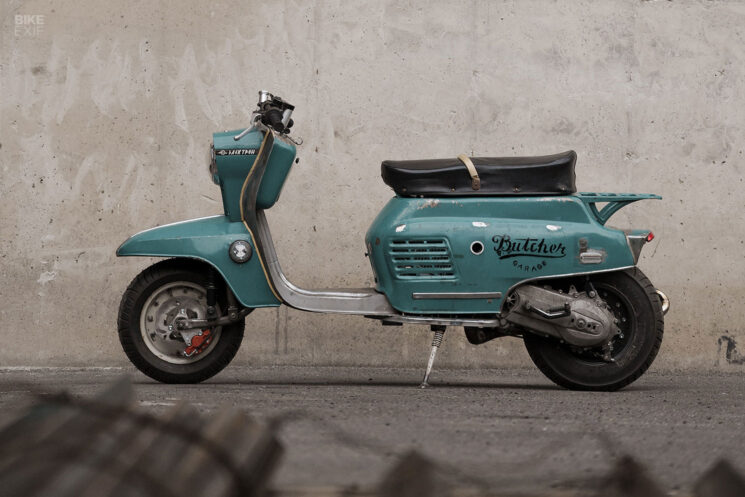
It’s the same deal with the Vyatka Elektron, which still wears its original teal paint, plus 50-plus years’ worth of wear and tear. Its owner also plans to paint it at a later stage—but we’d leave it as-is because the patina is a fantastic decoy for the performance mods that hide beneath it.
Mounted out back is a Piaggio ‘big block’ engine, upgraded with the piston from a Honda RS125. The crankshaft is a bespoke affair, and the exhaust is a modified Solo system. Butcher Garage also reworked the intake and transmission and installed a tunable Malossi CDI.
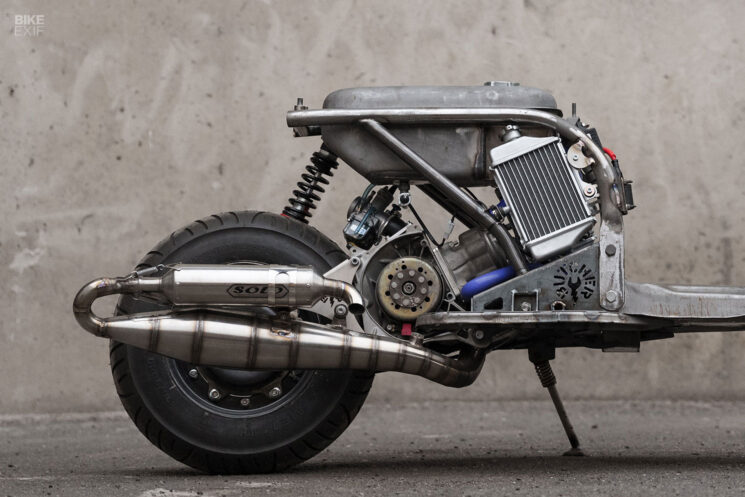
To compensate for the bigger and stronger powertrain, Butcher Garage replaced the Vyatka’s bolt-on subframe with a new, reinforced unit. It’s flanked by a pair of radiators, each equipped with a fan for extra cooling. An upgraded Bitubo shock props up the tail.
Moving to the front of the scoot, the crew modified the steering tube in a similar way to the VP-150. A CNC-machined ‘yoke’ is bolted to the top, hosting a pair of underslung direct-mount clip-ons. The steering setup comes from SIP, as does the speedo and the scooter’s new LED lighting.
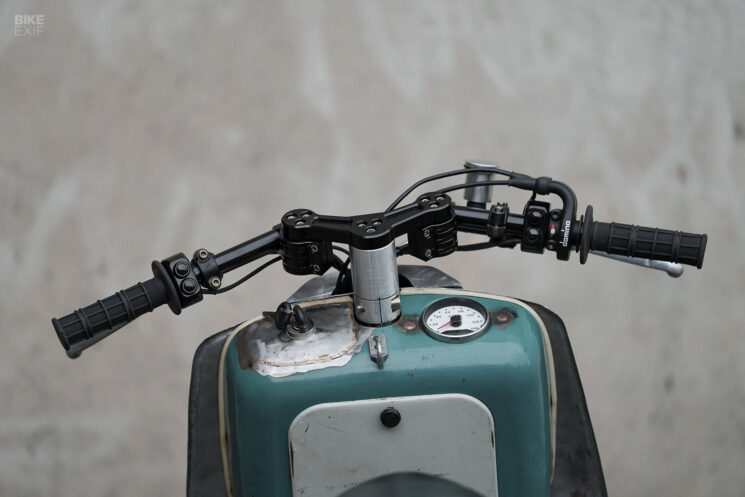
Butcher Garage also lowered the front forks and upgraded them with a pair of YSS shocks. The front wheel is a mish-mash of OEM parts and a one-off hub, designed to accommodate a twin-disc brake setup. Galfer discs and SIP calipers handle front-end stopping duties.
The team rewired the bike too, but they opted not to mess with the quirky art deco-like bodywork. “We tried to preserve the original Soviet design of the scooter,” Alex explains. “The front fender was narrowed and lowered, and the rear part of the body was modified to compensate for the rear wheel travel.”

In addition to painting it, the Elektron’s owner plans to swap the wheels out for a swanky set of three-piece aluminum units. But Butcher Garage isn’t about to leave their last two Russian clients in the lurch—they’re staying in touch, offering as much support as they can as long-distance consultants. (They’ve already mocked up some color options for the Elektron.)
“For all fans of our work in Russia, our move is a big loss and we are grateful to our friends, subscribers, musicians, photographers for their enormous support over the past 10 years,” Alex adds. “With longing in our hearts, we leave home to continue creating in a new place.”
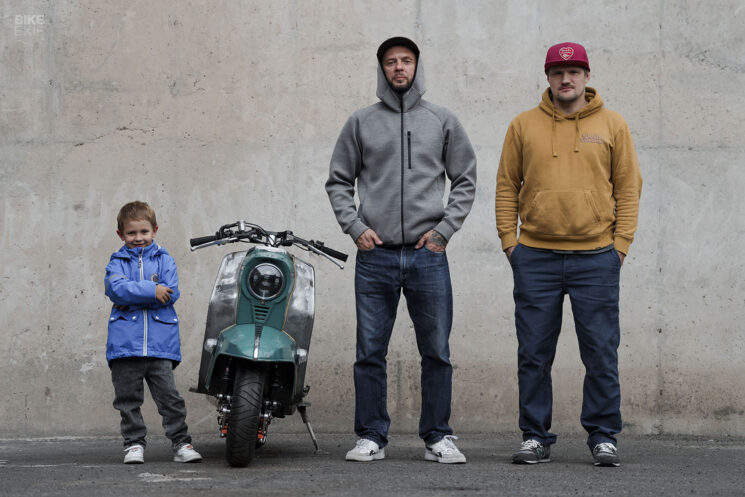
“On the other hand, we are pleased to announce that our garage has now become even closer to the huge family of Vespa lovers. Belgrade opens up new opportunities for our friends around the world to continue collaborating to delight our fans with new projects.”
“We are growing and developing—our butcher’s axe has only become sharper, and our hands have become even stronger.”
Butcher Garage | Images by Alexander Dymov
